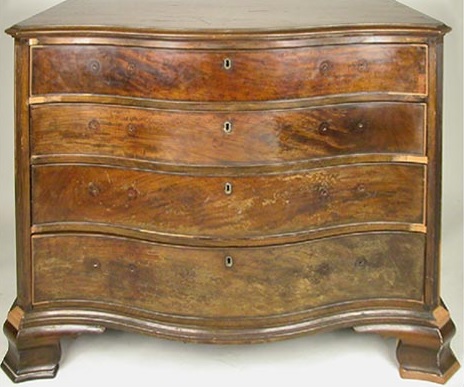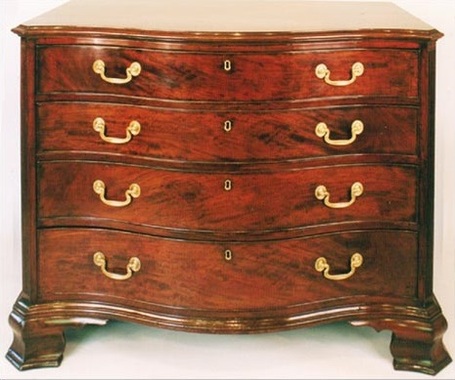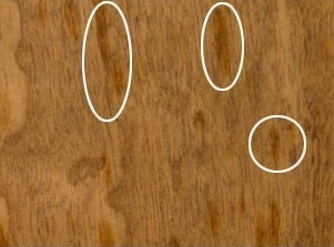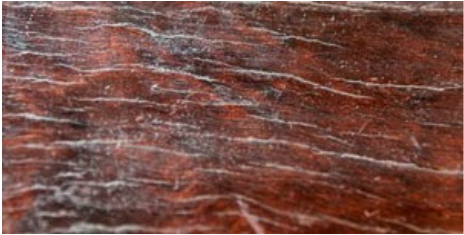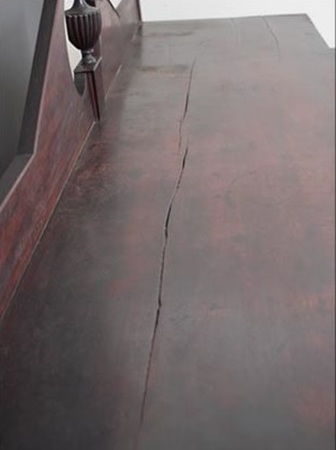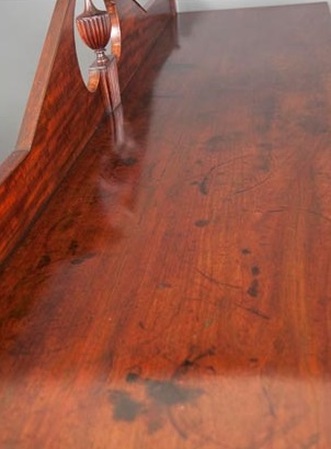Finishes and Finish Preservation |
|
|
Finish conservation can refer to the actual surface of the object or the coatings that have been applied to the surface. In recent years, preserving an original finish or an older finish is seen as a way to preserve part of the history of the object.
However, every treatment is different, depending on the end use of an object. A hard coating surface is desirable for an object that receives heavy institutional or domestic use. Objects of recent manufacturing often have synthetic coatings that naturally deteriorate after a certain period of time. Overuse of common household spray polishes can also have a devastating effect on coating layers (see photos below).
On the opposite end of the scale, efforts can and should be made to preserve an old or original thin finish on an object that receives little use or one in a museum setting, where it will endure minimal handling by trained curators or handlers.
However, every treatment is different, depending on the end use of an object. A hard coating surface is desirable for an object that receives heavy institutional or domestic use. Objects of recent manufacturing often have synthetic coatings that naturally deteriorate after a certain period of time. Overuse of common household spray polishes can also have a devastating effect on coating layers (see photos below).
On the opposite end of the scale, efforts can and should be made to preserve an old or original thin finish on an object that receives little use or one in a museum setting, where it will endure minimal handling by trained curators or handlers.
Preserving Surfaces of Historical Objects
The two images below depict a 1815 mahogany sideboard from Petersburg, Va., which had its older coating history preserved.

